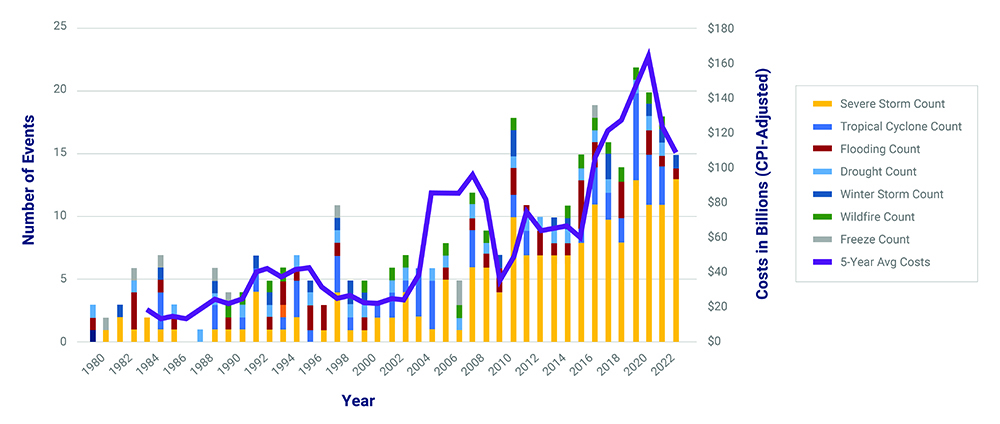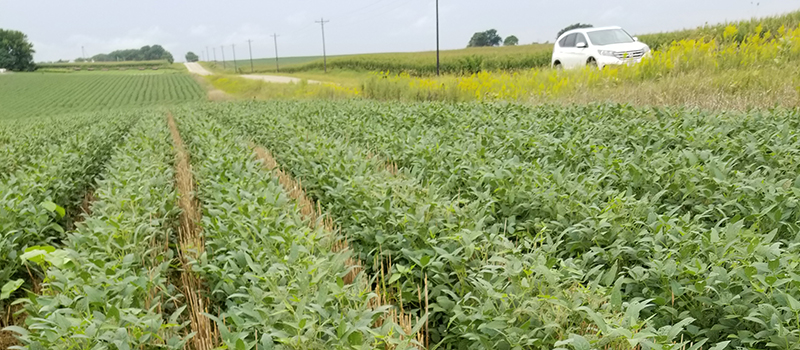Natural disasters of all kinds are becoming much more common. The number of Billion-Dollar disaster events and their costs has been steadily increasing since the 1980’s. Recent extreme weather events have influenced 72% of people’s views on climate change.
Poor forest management practices coupled with warmer and drier conditions are drastically increasing the frequency and magnitude of fires. In 2021, burning boreal forests
released 150% more carbon dioxide than annual average emissions between 2000 and 2020, nearly twice as much carbon dioxide as global aviation. Wildfires not only emit a massive amount of carbon, but they also damage local air quality, devastate wildlife, and destroy ecosystems.
Healthy forests should have approximately 40-60 trees per acre. Many at-risk forests today have up to 600 trees per acre. Overcrowded forests promote fires in two ways:
Crop production depends on access to healthy soil, adequate water supplies, and predictable weather conditions, all of which are more difficult to manage as the climate changes.
A 2019 U.S. Department of Agriculture Economic Research Service
report estimates that by 2080, increased price volatility and reduced yield from agriculture due to extreme weather will increase the cost of crop insurance programs by 11% for corn and 65% for soy.
A national survey of municipal flood and stormwater managers revealed that 83% had experienced flooding in their communities.
For a majority of Americans, two-thirds of their wealth is in their home. One flood can wipe out a lifetime of savings.













